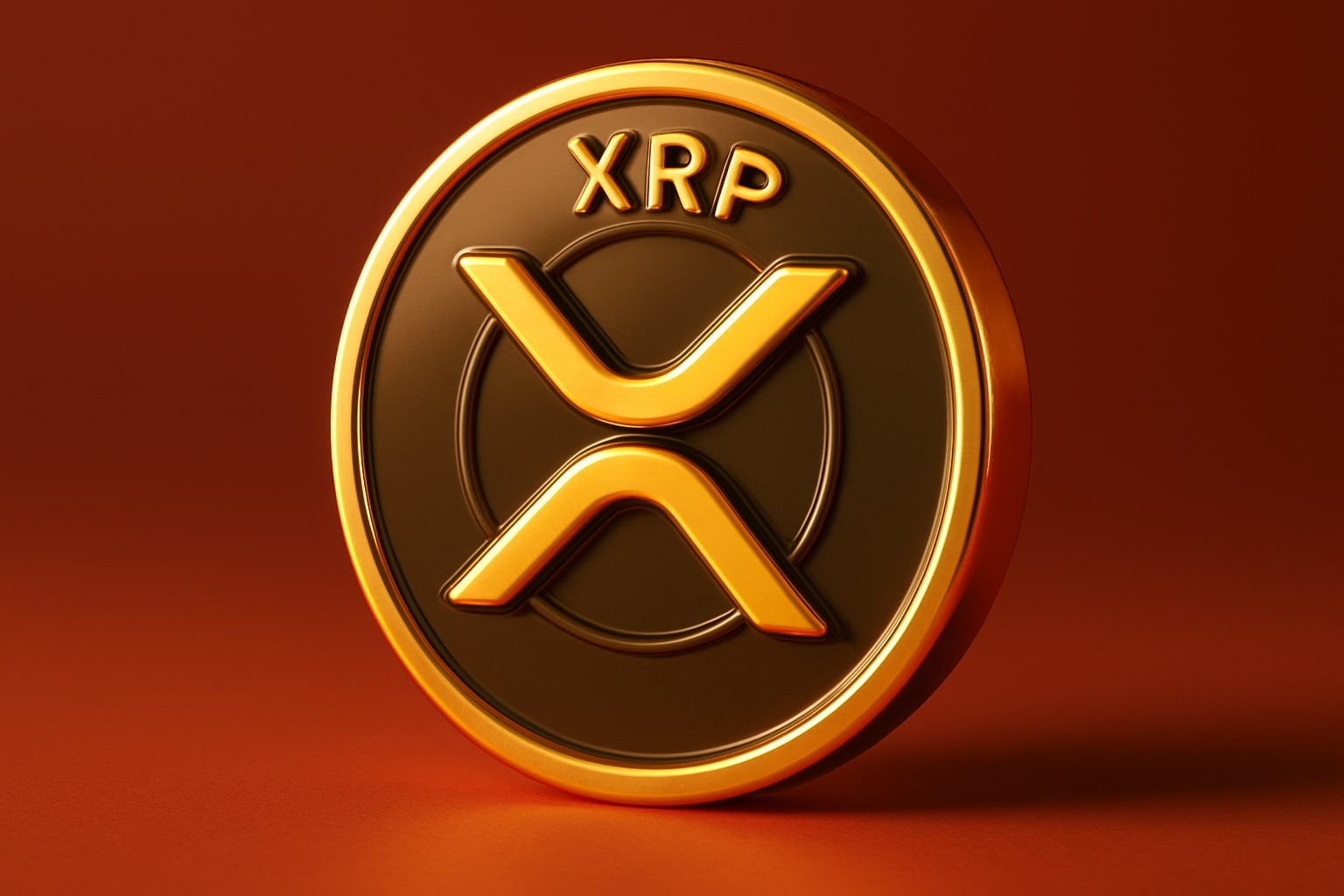
XRP Price Forecast - XRP-USD Faces Its Biggest Test as $245M XRP ETF Surge Collides With the $2.21 Support Wall
Ripple’s XRP hovers near $2.26 after the XRPC ETF’s $58M debut volume, a sharp $2.50 rejection, and rising institutional pressure as analysts eye a potential $3 breakout | That's TradingNEWS
Ripple’s New Market Structure Under Institutional Weight As XRP-USD Trades Between $2.21 And $2.50
Ripple’s XRP-USD enters one of its most consequential phases in a decade as institutional money, ETF mechanics, whale rotations, regulatory clarity, and macro-liquidity collide at the exact moment price compresses inside a tightening structure between $2.21 support and the $2.50 ceiling that rejected the breakout attempt during the Canary Capital ETF launch. The core difference between every XRP rally since 2017 and the current cycle is simple and numeric: $245 million of real ETF inflows on day one, $58 million in first-day trading volume, and as much as $26 million in the first 30 minutes of trading. Price spiked from $2.34 to almost $2.50, then retraced back toward $2.25, a classic liquidity-flush pattern that reveals institutional presence, not retail speculation. Real flows — not promises — now sit inside XRP’s structure, and the token’s $135–$137 billion market cap reacts to capital shifts far differently than in years prior.
ETF Momentum Defines Short-Term Price Behavior For XRP-USD And Rewrites Liquidity Flows
The launch of the XRPC ETF (NASDAQ:XRPC) fundamentally repositions XRP’s investor base. This is the first pure spot XRP ETF ever listed in the United States, arriving with regulatory clearance from a crypto-friendly SEC chair and instantaneous acceptance from Wall Street traders. The significance lies in the scale and speed of participation: $245 million created in the initial session, outperforming the recent Solana ETF debut nearly 4x, and ranking as the largest ETF launch of 2025. The Bloomberg ETF desk described XRPC and BSOL as “in a league of their own,” a statement reflecting institutional demand for exposure beyond Bitcoin and Ethereum. The ETF serves as the capital on-ramp for hedge funds, RIAs, pension allocators, and banks that previously avoided direct token custody. This is why XRP moved hard toward $2.50 on launch — ETFs create persistent, scheduled inflow mechanisms, not sporadic buying.
Why XRP-USD Rejected $2.50 Despite Massive ETF Inflows And Why It Matters For Price Structure
The failure to hold $2.50 was not a weakness of the ETF — it was the logical unwind of pre-launch positioning. Whales offloaded millions of XRP tokens ahead of the debut, capturing premium into the liquidity surge. The RSI drifting into the high-30s region on the lower time frames, the four-hour candles with long wicks above $2.40–$2.50, and repeated rejections at the descending trendline all confirm controlled selling pressure at the very moment retail traders chased the breakout. The structural support at $2.21 repeatedly held through multiple attempts, marking the lower limit of the symmetrical triangle that XRP has traded in since early October. The market is preparing for a break — the triangle has nearly reached its apex, and the next expansion will be decisive, not incremental.
The Scale Of Future ETF Demand And How It Translates Into XRP-USD Market Cap Scenarios
Seven separate XRP ETFs are in the queue, including issuers from Grayscale, 21Shares, Franklin Templeton, and Bitwise. If each achieves even 50% of XRPC’s first-day inflow, the combined effect equals $735 million of fresh liquidity on day one. Using a 12-month window of $600 million monthly inflows, the cumulative capital injection could reach $7.2 billion — modest relative to the Canary CEO’s prediction of $10 billion in the first month alone. Using the 100x inflow-to-market-cap multiplier applied in ETF modeling, a $7.2 billion inflow equates to $720 billion of added valuation. Added to XRP’s current $137 billion capitalization, this places total value near $857 billion, implying a price near $14.20 assuming 60 billion tokens actively circulating. This scenario is bullish but not guaranteed — the Ethereum ETF market proved that even $14.7 billion of capital can fail to push price materially when liquidity conditions counteract inflows.
Ripple’s Corporate Expansion, Banking Network And The Impact On XRP-USD Demand
Ripple’s aggressive expansion is crucial to understanding medium-term fundamental demand. The company’s $500 million raise at a $40 billion valuation, led by Citadel Securities and Fortress, signals institutional conviction and aggressive positioning toward financial infrastructure dominance. Ripple now connects 300+ banks globally, acquired a brokerage and custody business, and is building a stablecoin on the XRP Ledger designed for settlement integration. The U.S. court ruling in August — determining XRP is not an unregistered security — removed the decade-long regulatory overhang and wiped out the existential risk discount previously embedded in price. The ruling pushed XRP above $3.50 earlier in the year and revived multi-billion-dollar daily trading volumes. This legal clarity is vital: ETFs would not have been approved without it, and institutional allocators escalated monitoring of XRP precisely after the ruling.
Technical Compression, Structural Momentum And The Next Break Level For XRP-USD
The weekly structure shows XRP trading at the lower boundary of a rising channel. RSI momentum is softening, but the Chaikin Money Flow is forming higher lows and remains above 0, signaling capital inflows even as price compresses. XRP has successfully reclaimed the $2.35–$2.40 zone, turning it into short-term support. The critical battleground sits at $2.39–$2.395, the level bulls must defend to prevent a deeper breakdown toward $2.10–$2.20. Upside targets sit at $2.75–$2.85, the next resistance cluster, with a breakout scenario above $3.00 dependent on ETF inflow continuation. Neutral market forecasts highlight two pathways:
A decisive daily close below $2.21 → opens $2.07, then $1.92.
A decisive close above $2.33 → accelerates toward $2.52, then $2.68.
Macro Liquidity, Government Actions, And Market Sentiment Impacting XRP-USD
The U.S. ending its 43-day government shutdown returns the SEC and CFTC to full capacity, accelerating pending ETF reviews and crypto regulation processes. Liquidity narratives shifted as Emory University disclosed $52 million in additional Bitcoin ETF exposure, signaling institutional preference for regulated crypto channels. Taiwan’s exploration of a national Bitcoin reserve is another macro liquidity signal relevant to altcoin flows; whenever global institutions resume structural accumulation, XRP typically participates in the second wave of rotation. With macro volatility in Bitcoin and Ethereum stabilizing, the rotation window into high-utility altcoins — led by XRP — becomes stronger.
Read More
-
Micron Stock Price Forecast (NASDAQ:MU) Climbs Toward $250 as AI Supercycle Tightens Memory Supply
15.11.2025 · TradingNEWS ArchiveStocks
-
Ethereum Price Forecast - ETH-USD Stalls at $3,194 as Bearish Momentum Threatens a Drop to $3,000 Despite Long-Term Accumulation
15.11.2025 · TradingNEWS ArchiveCrypto
-
Oil Price Forecast - Oil Prices Strengthen as WTI Touches $60.09 and Brent Climbs to $64.39 on Demand Upgrades
15.11.2025 · TradingNEWS ArchiveCommodities
-
Stock Market Today: Nasdaq Rebounds to 22,900 as NVDA Stock at $190 and MU Rally While Dow Falls to 47,147
15.11.2025 · TradingNEWS ArchiveMarkets
-
GBP/USD Price Forecast - Pound Slumps Toward 1.3130 as UK Data Softens
15.11.2025 · TradingNEWS ArchiveForex
The Broader Altcoin Rotation And XRP’s Comparative Position In Institutional Portfolios
Solana’s ETF success created a template for capital rotation. Investors who missed the early Solana run are scanning for the next regulated asset with real-world use — XRP’s payments utility, decade-long uptime, low cost, and settlement structure provide a fundamentally different profile compared to speculative gaming or DeFi tokens. XRP’s real-world throughput and institutional banking rails align with ETF buyer preferences far more than meme-driven alternatives. This explains why Hedge funds and RIAs favored XRPC far more aggressively than the same issuer’s HBAR and LTC products, which launched quietly with minimal inflows.
Buy, Sell, Or Hold On XRP-USD?
Across all data — ETF inflow modeling ($7.2B → $720B valuation impact), price behavior around $2.50, triangle compression toward the apex, Ripple’s $40B valuation raise, the 300-bank network, whale rotation patterns, RSI and CMF divergences, legal clarity, multi-ETF pipeline, and institutional liquidity indicators — the structure points to asymmetric upside if ETF inflows continue and the $2.21 base holds.
The rating is: Buy with volatility-aware risk



















